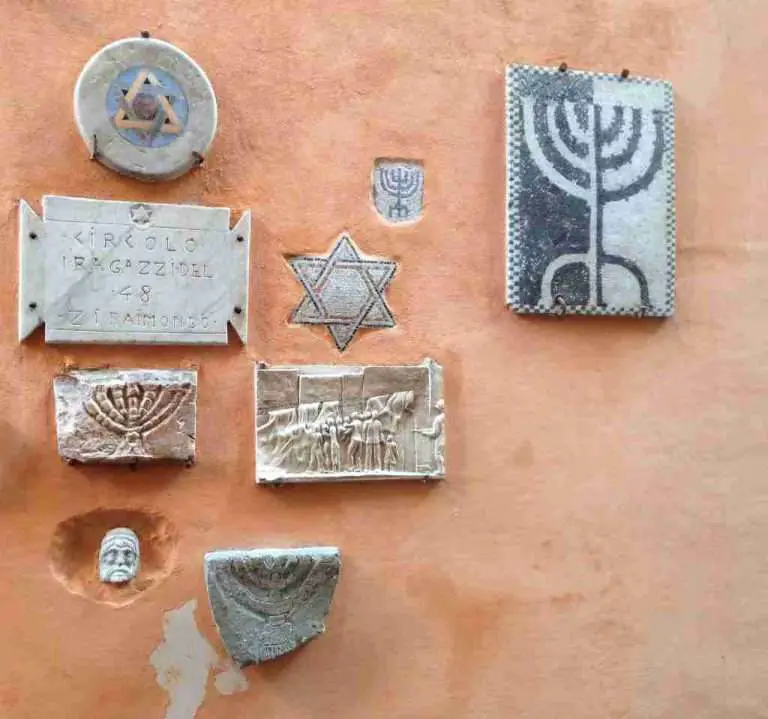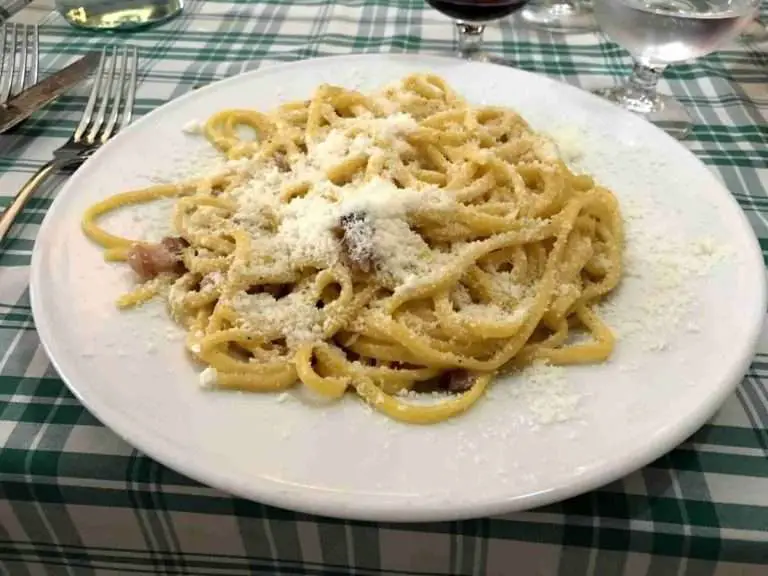
Leonardo da Vinci, the original Renaissance Man, was born in Italy more than 500 years ago. Yet despite being one of the best known of Italian names, following his trail in Italy is not so simple.
For example, his Mona Lisa, arguably the most famous painting in the world, is in the Louvre in Paris. Also in France, in the Loire Valley, is Leonardo’s tomb, as he died in Clos Lucé on May 2, 1519, while he was in service to King François I.
Though Leonardo’s body and his most recognized masterpiece rest in France, there are still many places in Italy where you can see the sketches, preparatory drawings, notebooks, paintings, sculptures, and fully-realized scientific objects built to the specs of Leonardo’s drawings.
Use this post is a guide to help you plan your trip along Italy’s Leonardo da Vinci trail.
Leonardo da Vinci in Tuscany

Leonardo’s story begins in the Tuscan countryside. He was born on 15 April 1452 in the town of small town of Anchiano, just up the road from Vinci, where Leonardo would live with his mother until around the age of five. Later, he would live with his father and his extended family in Vinci, the town that would give Leonardo his surname. Leonardo di Ser Piero da Vinci means Leonardo, son of Piero from Vinci.
If you’re in this corner of Tuscany (approximately one hour east of Florence), you can visit Leonardo da Vinci’s childhood home Casa Leonardo, in Anchiano, and the Museo Leonardiano in Vinci. There are not any original works here but you can, as the museums explain, get to know the artist in a rustic, intimate setting and see the landscape that inspired Leonardo to draw and dream.
Leonardo in Florence

Florence, the birthplace of the Italian Renaissance, also gave birth to Leonardo as an artist and inventor. It was here that Leonardo studied under and surpassed his master Andrea Verocchio, in whose workshop Leonardo worked from the age of 14 until about age 24.
Leonardo da Vinci’s Works in the Uffizi

Italy’s most important museum for Renaissance art, the Uffizi, has a few of Leonardo’s works.
Paintings include the “Annunciation,” “Adoration of the Magi,” and a self-portrait. A number of the artist’s sketches and under-drawings are in the Uffizi’s Prints and Drawings Collection.

Room 35 of the museum is dedicated to the paintings of Leonardo da Vinci and to artists who inspired (Andrea del Verrocchio) or admired (Luca Signorelli, Lorenzo di Credi, and Pietro Perugino) his work.
“The Lost Leonardo” at the Palazzo Vecchio

The legend of Leonardo da Vinci’s massive painting “The Battle of Anghiari” lives on in the Palazzo Vecchio’s Salone dei Cinquecento, although the painting is thought to be covered by a wall or another fresco.
The location of da Vinci’s monumental painting, at times referred to as “The Lost Leonardo,” remains a mystery.
An additional curiosity: Michelangelo was originally commissioned to fresco the wall opposite “The Battle of Anghiari” with a depiction of “The Battle of Cascina.” The latter was never executed but some studies exist of the work.
Leonardo in Milan
Leonardo’s Masterpiece: “The Last Supper”

Santa Maria della Grazie in Milan
Leonardo da Vinci worked in Milan, in service to the Duke of Milan Ludovico Sforza, from 1482 to 1499. It was during this time that Leonardo painted “The Last Supper,” the most famous of his masterpieces in Italy.
The Cenacolo Vinciano (or Last Supper) still resides in the refectory of the church of Santa Maria delle Grazie, where Leonardo finished it in 1498.
The painting represents the scene of the Last Supper of Jesus with his apostles, as it is told in the Gospel of John. In the scene, Jesus has just found out that one of his followers will betray him. It is one of the most recognizable paintings in the world.
But getting in to see The Last Supper is not easy. Visitors must purchase a timed ticket and these tickets are made available online only about three to four months in advance. Five tickets can be purchased at one time, but are often bought up quickly by ticket brokers and tour companies. Visits to The Last Supper last 15 minutes and only 30 visitors are allowed at one time.
Entrance to The Last Supper is free on the first Sunday of each month, but you still must make reservations for free tickets. You can reserve Last Supper tickets online or by calling +39 02 92800360 or (toll-free in Italy) 800 990 084.
If you don’t want to try to secure Last Supper tickets on your own, here are a few guided tours to consider:
- The Best Of Milan Tour With Last Supper Tickets & Milan Duomo Rooftop
- Da Vinci’s Last Supper and Sforza Castle Semi-Private Tour with Guide
More Leonardo in Milan

Beyond “The Last Supper,” Milan holds several other works by Leonardo da Vinci, both originals and fully realized models based on his notebook drawings.
The Codex Atlanticus, one of da Vinci’s notebooks filled with extensive observations and drawings, is preserved in the Biblioteca Ambrosiana and several of the drawings from that notebook are on display. (You can also explore the Codex Atlanticus on the Biblioteca Ambrosiana website or thanks to this Codex Atlanticus Project.) Beyond the manuscripts, the library contains the Pinacoteca Ambrosiana, which has Leonardo’s “Portrait of a Musician.”
Milan’s Castello Sforzesco houses yet another notebook, the Codex Trivulzianus. A treasure of the castle’s Biblioteca Trivulziana, the notebook is a study in architecture and religion. Leonardo also painted provided the ceiling decoration in a room in the Castello Sforzesco, the Sala delle Asse.
The Leonardo da Vinci Science and Technology Museum has many models based on the Leonardo’s inventions. It also houses the Leonardo Lab, a hand-on interactive space to learn more about Leonardo’s inventions.
Leonardo in Rome
Rome is not a major stop on the Leonardo trail as there is only one Leonardo original here and it is in the Vatican.
Leonardo’s painting “Saint Jerome in the Wilderness” is on display in the Vatican Museums in the Pinacoteca.
Leonardo in Turin


The Biblioteca Reale di Torino (Royal Library of Turin) houses the Codex on the Flight of Birds, Leonardo’s analysis of flight mechanics, air resistance, and currents.
In the codex, he proposes mechanisms for flight by machines. Da Vinci constructed a number of these machines and attempted unsuccessfully to launch them from a hill near Florence.
In addition to the Codex are two other drawings by Leonardo — the “Fanciulla” and the artist’s famous self-portrait.
Leonardo in Venice

Da Vinci’s renowned “Vitruvian Man,” a study of the human form from both an artistic and scientific perspective, is kept in Venice’s Galleria dell’Accademia. Note that given the very delicate nature of the paper drawing, Vitruvian Man is not always on display to the public.
- Find Venice Accademia Tours, including skip-the-line tickets and walking tours of the surrounding Dorsoduro District
Learn More About Leonardo
If you want to learn more about the life of Leonardo da Vinci, I highly recommend Walter Isaacson’s biography of Leonardo da Vinci. This 524-page book “shows how Leonardo’s genius was based on skills we can improve in ourselves, such as passionate curiosity, careful observation, and an imagination so playful that it flirted with fantasy.” Isaacson writes in exacting detail about Leonardo da Vinci’s notebooks, drawings, and inventions, making this an incredible reference book for Leonardo lovers. I also enjoyed the audiobook of the Leonardo da Vinci biography, which is read masterfully by Alfred Molina.
Post first published on June 11, 2019







